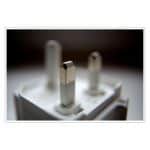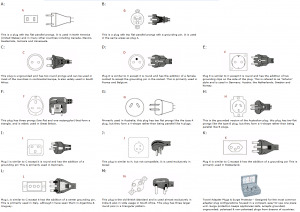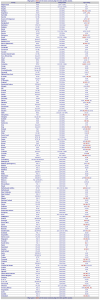International Electric Plug Adapters & Voltages for the World’s Countries

Know the Plug Adapters & Voltages Before You Go
If you are going to use electrical appliances abroad, you need to know what type of electrical voltage is used in the country where you’re moving or traveling to and what type of adapter or plug is needed to plug your appliances into the outlet. Look at our diagrams of adapter plugs to get an understanding of what an adapter plug is.
Most electrical appliances made for use in the U.S. work at 115 volts. While most of North and South America, the Caribbean and Japan also use 110-voltage electricity, most countries in Europe and other parts of the world have 220-volt electrical outlets. (References to 110 or 220 volts are approximate; actual voltage may vary in either case, but the amount of variance from the “official” voltage is generally insignificant.)
You can buy travel style voltage converters that will convert 110-volt appliances to 220, however, to complicate matters there are different types of converters for different types of appliances. Small electronics, razors and non-heating appliances will need a 50-watt converter. Heating appliances such as dryers, irons, coffee makers and other high-power electrical appliances need a 1600-watt converter. You can also purchase larger converters for heavier wattage. Check the label on your electrical appliance to find its wattage. To further complicate matters, some electronics such as TV’s, VCRs and computers are designed for 60 cycles-per-second (HZ) electricity and cannot tolerate the 50 cycles-per-second (HZ) electricity found in many countries. Even if you have the right converter you run the risk of blowing a fuse in your hotel or burning out your electrical appliances.
Given the complexities of safely using your electrical appliances overseas, you may want to consider some alternatives. If you plan on staying in one country for awhile, you might want to buy a hair dryer or electric razor there. Battery operated appliances are another option if you don’t mind constantly replacing the batteries. Or, you can do as many experienced travelers do and leave all the electrical appliances at home. You probably don’t really need them and they’re often more trouble than they’re worth overseas. It is possible to convert an entire house; so that it has both 115 and 220 at your option. A professional must install a converter. You end up with two sets of plugs, but that’s preferable to throwing away valuable appliances, or antique lamps.
If you must take some electrical appliances with you abroad, your best bet is to buy travel-size dual-voltage appliances that can run on both 110 and 220 currents. In fact, it is a very good idea to do so.
For longer trips, here are some additional tips:
– For heavier devices you will need a converter sufficient to the task. Anything from 200 watts and up will run more than one device. Calculate your watt necessity and plan accordingly. Being power ready is great, but being power poor is the worst kind of nightmare.
– Buy a converter before you go. Don’t expect to find one when you arrive. (Nobody at your destination needs a converter.) Also, buy the proper plug adapter and some electric plug strips with surge protectors.
– Once your are at your destination, plug your converter into the local electric current and your electric plug strip into the converter.
– If your converter has multiple outlets, plug in multiple plug strips. This will allow you to use multiple devices without fear of having insufficient wattage.


Like Our Articles?
Then make sure to check out our Bookstore... we have titles packed full of premium offshore intel. Instant Download - Print off for your private library before the government demands we take these down!





